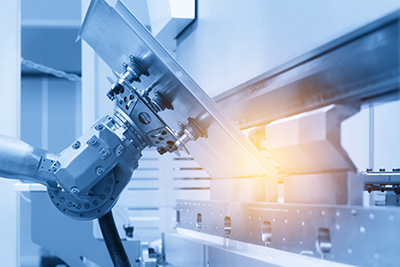Leveraging 3D Printing for End of Arm Tooling

In recent years, robotic arms with advanced end of arm tooling have helped the manufacturing industry develop even faster production facilities.
Following their start in the automotive industry, robot arms are now used in almost every industry one can think of, ranging from medical to agriculture to electronics. With robotics entering into these new fields, and new requirements on the production line, new end of arm tooling (EOAT) solutions are constantly being developed.
End of Arm Tooling Increases the Viability of Automation
End of arm tooling involves the device that is attached to the end of a robotic arm. EOAT increases a robot’s ability to complete fine motor tasks. EOATs come in all shapes and sizes for all different types of applications. An EOAT can be thought of as the “hand” of the robotic arm. EOATs increase a robotic arm’s efficiency and accuracy.
EOATs often come in direct contact with a specific part of an object. Because of the wide range of applications and materials that must be manipulated, tools must be very specialized for the tasks required of them. Robotics manufacturers have stepped up to the task, creating EOATs that allow automation to solve all new challenges.
3D Printing All Types of EOATs
Because EAOTS must be highly customized, they come in many different types. Grippers, welding torches, force-torque sensors, material removal tools, collision sensors, and tool changes are just some options available.
Thanks to additive manufacturing, engineers can create and prototype EOATs without expensive tooling and machine setup. 3D printing an EOAT also makes for a more detailed design and lighter parts that can be produced much faster from design to delivery. By means of fused deposition modeling, engineers from Genesis have created EOAT grippers that are not only cost and time-efficient but have the intricate and complex shapes needed to grip and hold unique parts.
The 3D printing of tools results in lightweight parts. This is important for robotic arms with limited weight ratings. Light tools let the arm move faster and more efficiently. Engineers can test designs by means of rapid iterations for a fraction of the cost of conventional manufacturing.
Talk with Genesis to learn how we have combined the two strongest links to producing a quality product — Dimensional Engineering and Tooling Proficiency — to offer manufacturers optimal robot tooling solutions.
Posted in Additive Manufacturing